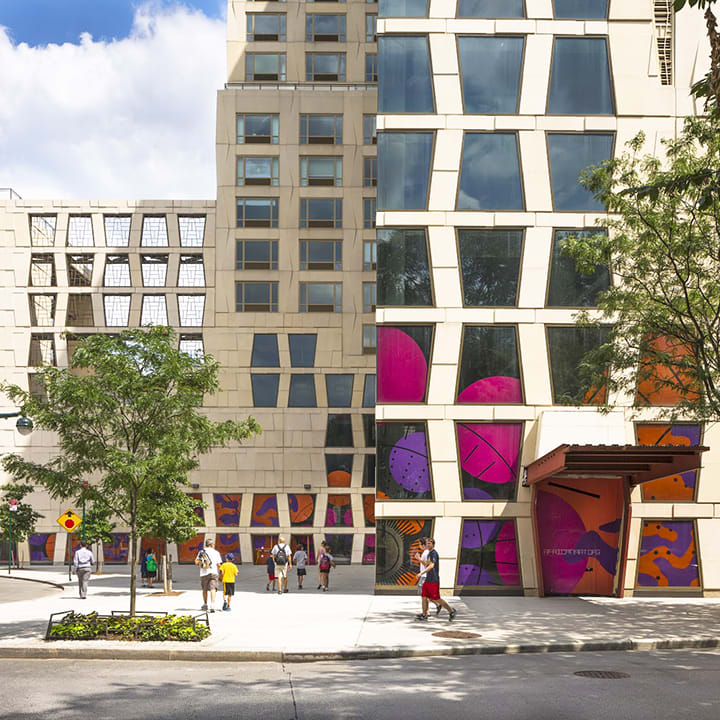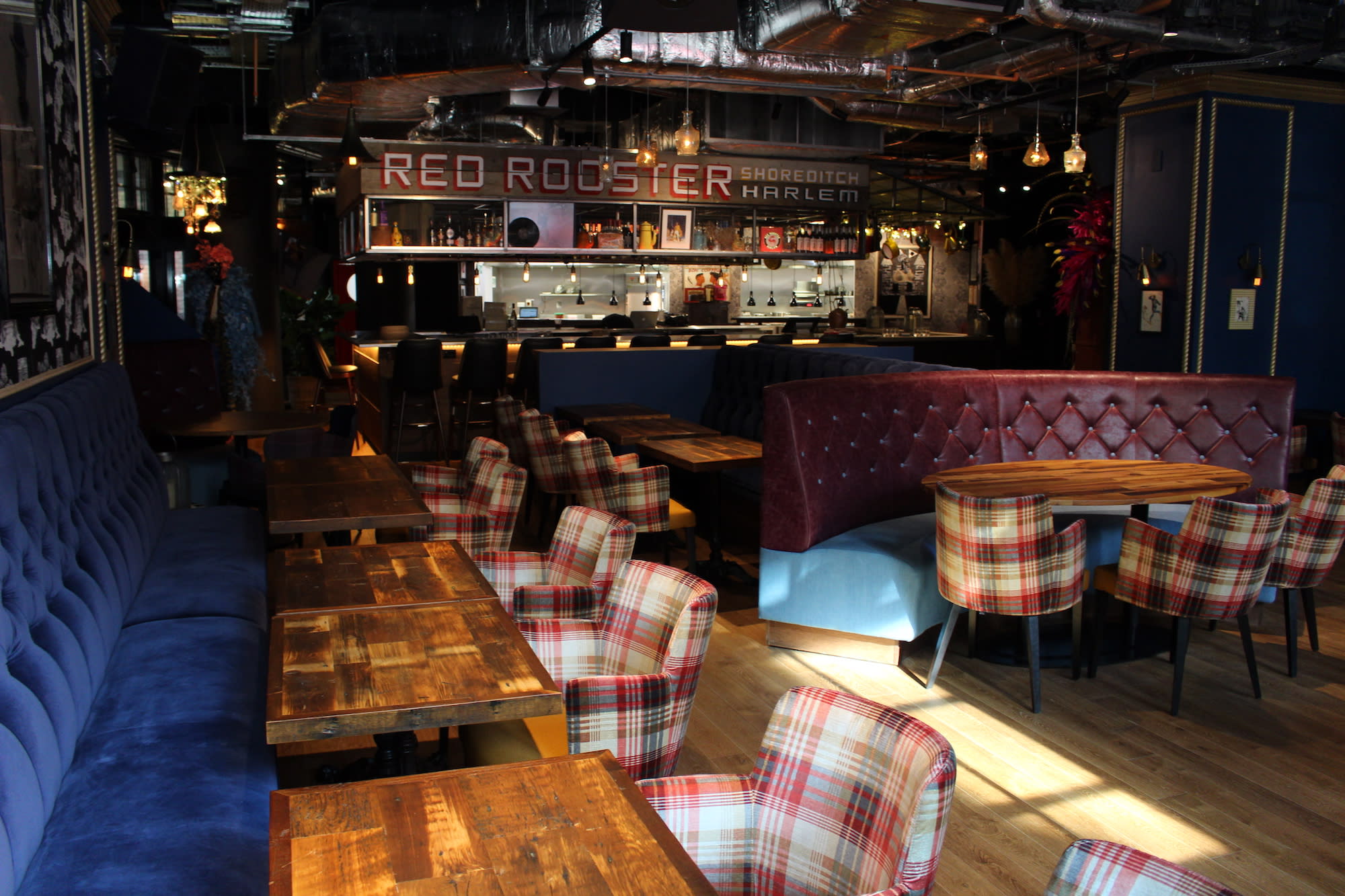An Art Student's Guide to The Neighborhood

Historically known as the epicenter of African-American culture in America and one of the hippest cultural hot spots of New York City, like much of the five boroughs, Harlem has drastically changed over the last few decades. Yet the neighborhood stills thrives as a vibrant cultural force, without ever forgetting its rich legacy and roots. There is an overabundance of places to explore.
Here are a few things to see, do and taste in the neighborhood.
Enrich your knowledge of the city at the Museum of the City of New York - 1220 Fifth Avenue
As New York perpetually transforms and evolves, the museum celebrates and interprets the city, educating the public about its distinctive character, especially its heritage of diversity and opportunity.
Check the tags at the Graffiti Hall of Fame - East 106th Street
A gallery of street art by "Kings and better," the concrete walls of the Jackie Robinson Educational Complex’s schoolyard have been attracting some of the best street artists in the world for more than 30 years.

Soak up entertainment at the Apollo Theater - 253 West 125th Street
A New York landmark that opened in 1934 and perhaps the most legendary venue in Harlem, the culturally-rich Apollo Theater played a crucial role in the development of African American music in the United States and continues its position as a vital entertainment Mecca for New Yorkers and the local community.
Appreciate Jazz at Minton's Playhouse Jazz Club and The National Jazz Museum in Harlem - 206 West 118th Street and 58 West 129th Street
Take in jazz with your eyes and ears. Known as the birthplace of Bebop, Minton's was fundamental for the development of this quintessential American music and remains an essential locale for modern jazz music and musicians. A Smithsonian Affiliate, The National Jazz Museum in Harlem is a thriving center for jazz that stimulates hearts and minds and reaches out to diverse audiences to enjoy.
Sing along at the Abyssinian Baptist Church - 132 Odell Clark Place
Not just a place for worship, featuring a famed gospel choir that sings from above in the balcony, this historic Cathedral, the first African American Baptist church in New York state, was founded in 1808.
Relax and take in the views at Morningside Park and Harlem Meer - Morningside Drive and the Northeast corner of Central Park
Morningside Park includes some of the city’ most breathtaking views and dramatic landscapes, including rocky Manhattan schist, some of which date back to over 30 million years ago. Named after the Dutch word for "small sea,” the Meer was designed to memorialize Harlem when it was a separate village settled by European settlers in the 17th century. It’s also just simply beautiful and tranquil.
Shop at the Malcolm Shabazz Harlem Market - 116th Street
Named after the grandson of Malcolm X and known as Harlem’s Little Africa, the marketplace is composed of individual shopkeepers is a great place to find traditional African trinkets, clothing, wood carvings, and beads.

Kick back and drink java at Little Bean Coffee - 111 Central Park North
The signature drink, “Harlem Saphire” is triple strength and no joke. Art lovers as well, the cafe displays local artists’ paintings on its walls.
Learn more about African American history at the Schomburg Center for Research in Black Culture - 515 Malcolm X Boulevard
Hosting jazz concert films, lectures and tours and possessing a trove of vintage literature and memorabilia from the African diaspora and Black culture, the institute’s goal is to advance the knowledge of the global black experience through dynamic programs and exhibitions.
Experience black culture at The African Center – 1280 5th Avenue
Dedicated to increasing public understanding and appreciation of African art and culture, The African Center, formerly the Museum for African Art, is a home for exhibitions, performances and showings of visual, performing, and digital art from Africa.
Note for Museum aficionados: El Museo Del Barrio (1230 Fifth Ave), which serves to educate the public with Latino, Caribbean and Latin American cultures is currently closed, but will reopen in the summer later this year. Likewise, the Studio Museum of Harlem, which features artworks inspired by black culture nationally and internationally, is constructing an entirely new facility which won’t be open until 2021, however, programming and exhibitions still occur at a variety of community partner sites through an initiative called inHarlem.

Five Local Eats:
Sylvia’s Restaurant – 328 Malcolm X Boulevard
Founded in 1962, Sylvia’s Restaurant of Harlem is a neighborhood landmark and she's been dubbed “The Queen of Soul Food.”
Red Rooster Harlem—310 Lenox Avenue
Paying homage to Harlem's culturally rich and diverse neighborhood, Marcus Samuelsson’s Red Rooster Harlem is a large 3,400 square-foot space that focuses on elevated American comfort food against a backdrop of warm colors, stimulating art and soulful live music.
Harlem Tavern - 2153 Frederick Douglass Boulevard
Every neighborhood needs its buzzing beer garden with tasty treats and Harlem Tarven, located in the hip, real-estate-dubbed “SoHa” neighborhood, is the place to beat for casual noshing and drinks.
Chez Lucienne - 308 Lenox Avenue
Located right next door to Red Rooster Harlem, Chez Lucienne brings you a Parisian escape without having to use your passport. French cuisine and live jazz music on Saturday nights makes for a fancy, but still affordable night out.
Ginny’s Supper Club - 310 Lenox Ave.
Transport back to the time of the Harlem Renaissance at this cool nightclub with delicious eats, exotic cocktails and live music.

